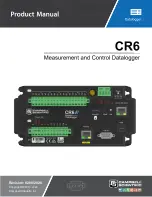
5
ELECTRICAL INSTALLATION
84
8017768/12AX/2019-05-31|SICK
O P E R A T I N G I N S T R U C T I O N S | TIC
Subject to change without notice
5.4.2
2D LiDAR sensor connection
5.4.2.1
Connecting the 2D LiDAR sensors to the voltage supply
Each 2D LiDAR sensor is connected to the voltage supply separately.
Please use the cables for connecting to the voltage supply that are available as
accessories. This cable has an M12 plug connector for connection to the 2D LiDAR sensor
on one end. The other end is open with shielding for connection to the voltage supply.
Fig. 92: Electrical installation of the LMS511 2D LiDAR sensor – Connecting to the voltage supply
Connection notes
A voltage of 19.2 V to 28.8 V is required. The power consumption per 2D LiDAR sensor
is 22 W plus another 55 W for the heating, where applicable. We recommend using
separate power supply units for the 2D LiDAR sensor and its heater.
▸
Wire all connections using copper cables.
▸
Use the following wire cross-sections:
Connection of
Cable cross-section
Supply voltage
At least 0.25 mm
2
if local voltage supply (power supply unit) is in
the immediate proximity.
At least 1.0 mm
2
with a maximum length of 20 m when connected
to available 24 V DC mains voltage
For additional information on the electrical installation work, please see the operating
instructions for the 2D LiDAR sensor.
Connecting the 2D LiDAR sensors
1. Screw the M12 round connector of the cable into the
Power
female connector on the
2D LiDAR sensor.
2. Run the cable to the control cabinet or to the distribution box.
3. Connect the wire ends of the connecting cable to the terminals of the control cabinet.
▸
Connect the wires to the power supply in the control cabinet as follows:
Pin
Wire color
Connection
1
Brown
Voltage (+24 V)
2
White
Heating (+24 V)
3
Blue
Ground
4
–
–
5
Black
Heating ground
Tab. 16: Electrical installation of the LMS511 2D LiDAR sensor – Connecting to the voltage supply
















































